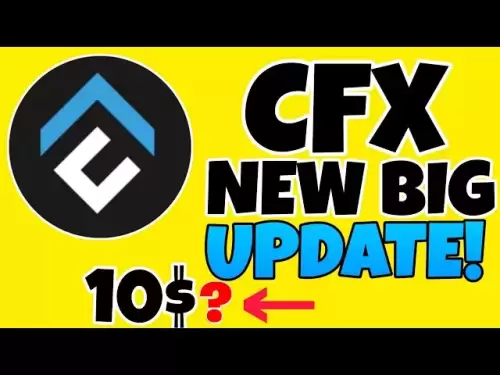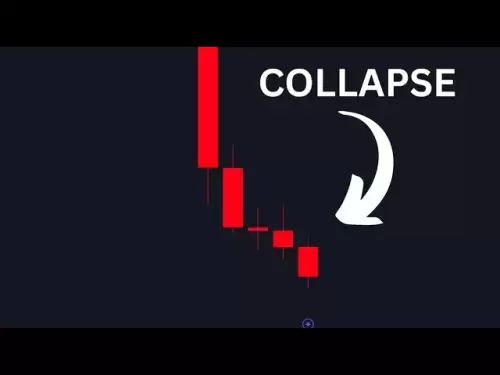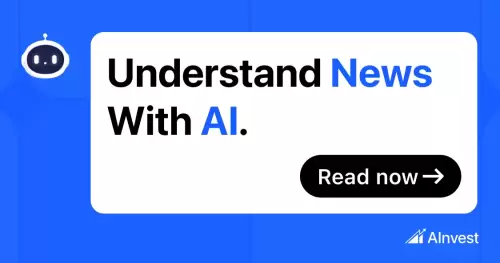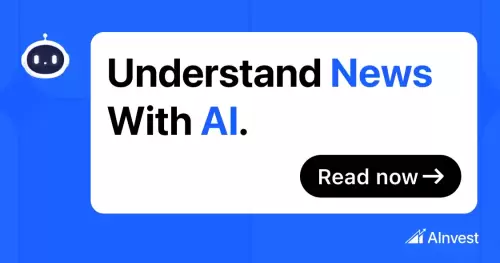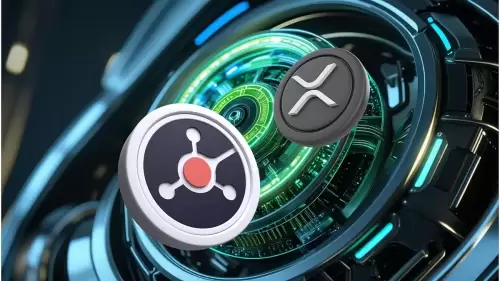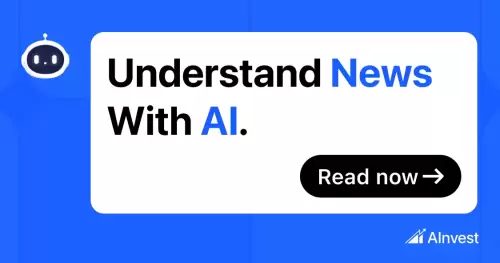 |
|
 |
|
 |
|
 |
|
 |
|
 |
|
 |
|
 |
|
 |
|
 |
|
 |
|
 |
|
 |
|
 |
|
 |
|
自GPU和地下室设置时代以来,比特币采矿已经走了很长一段路。在那个时候,矿工以无数的方式进步。
Bitcoin mining has come a long way since the days of GPUs and basement set ups. In that time, miners have advanced in countless ways. For example, ASICs are now the standard, not GPUs.
自GPU和地下室设置时代以来,比特币采矿已经走了很长一段路。在那个时候,矿工以无数的方式进步。例如,ASIC现在是标准的,而不是GPU。
Furthermore, enterprise grade players have entered the field, opening new frontiers and bringing with them the size and institutional recognition that opens the doors to otherwise unreachable places for smaller miners. Nowadays, the mining landscape is one where grid services, curtailment strategies, and energy market participation are no longer edge cases but core strategies.
此外,企业级参与者已经进入了该领域,开放了新的边境,并带来了规模和机构认可,这为小型矿工打开了其他无法达到的地方。如今,采矿景观是网格服务,削减策略和能源市场参与不再是边缘案例,而是核心策略。
As the world around it has moved forward, there’s one question we keep hearing from miners: can PPLNS adapt?
随着周围世界的发展,我们一直在听矿工的一个问题:PPLN可以适应吗?
Many miners, particularly those working closely with energy providers or integrating Demand Response mechanisms, have come to view PPLNS with suspicion. They worry that it penalizes downtime and rewards only uninterrupted hashrate—a bad deal for those who routinely curtail machines to support the grid or provide other services.
许多矿工,特别是那些与能源提供者紧密合作或整合需求响应机制的矿工,他们已经怀疑了PPLN。他们担心它会惩罚停机时间,并仅奖励不间断的哈希拉特(Hashrate) - 对于那些经常削减机器以支持网格或提供其他服务的人来说,这是一笔不好的交易。
This fear isn’t baseless. It traces back to a pivotal moment in the mining industry’s recent past, one that apparently sealed the deal for many on PPLNS style payouts: the fallout between RIOT and Braiins Pool.
这种恐惧并非毫无根据。它可以追溯到采矿业最近的一个关键时刻,这显然使许多人在PPLNS风格的支出上达成了交易:Riot和Braiins Pool之间的后果。
At the time, Braiins was using the Score payout system. Designed in 2011 by Slush himself, Score was engineered to solve the problem of pool hopping—when miners would jump between pools to exploit reward systems. There’s also been a misconception that Score is a PPLNS style payment system, but as Rosenfeld’s bible on pool payout systems describes, Score and PPLNS are distinctly different payout methods. The main difference is how they account for shares, specifically, Score implemented a rolling window with exponential decay function, this effectively made the lookback window very short. On the other hand, PPLNS is a family of payout systems with various types of fixed length lookback windows.
当时,布赖恩斯正在使用得分支付系统。 Score在2011年由Slush本人设计的,是为了解决跳台跳跃问题而设计的,当时矿工会在泳池之间跳跃以利用奖励系统。也有人误解得分是PPLNS样式支付系统,但是正如罗森菲尔德(Rosenfeld)在泳池支付系统上的圣经所描述的那样,得分和PPLN是明显不同的支付方法。主要区别是他们如何解释共享,具体来说,得分实现了具有指数衰减功能的滚动窗口,这有效地使回顾窗口非常短。另一方面,PPLN是一个带有各种固定长度回溯窗口的支付系统系列。
As shown on this archived website of how Score worked, you can see that after 90 minutes your hashrate had no more presence on the pool. This means that the moment a miner starts mining, their share of rewards quickly reaches the fair value of the hashrate. On the other hand, when a miner stops mining, it drops equally fast, as shown on the gif below.
如该存档的网站上所示,得分如何工作,您可以看到90分钟后,您的哈希拉特在泳池上不再存在。这意味着,当矿工开始开采时,他们的奖励份额很快就达到了哈希拉特的公允价值。另一方面,当矿工停止采矿时,它会同样快地下降,如下面的GIF所示。
This might have worked well in the era of cowboys and hackers, but it was never designed with today’s complex mining environments in mind. Certainly not with Demand Response, where miners intentionally and profitably take machines offline to stabilize energy grids or bid into ancillary markets. To Score, that kind of behavior looks no different than a pool hopper—someone attempting to cheat the system.
在牛仔和黑客时代,这可能效果很好,但是从来没有考虑到当今复杂的采矿环境。当然,没有需求反应,矿工有意和有利可图地将机器脱机以稳定能源电网或竞标辅助市场。要得分,这种行为看起来与泳池料斗没有什么不同 - 有人试图欺骗系统。
So when RIOT left Braiins, citing concerns about payout mechanics, it sent a shockwave through the mining world. Due to the aforementioned misconception, Score system’s flaws got unfairly projected onto a broader category of payouts, PPLNS got caught in the fray, catching a stray bullet in the process, and the industry collectively threw the baby out with the bathwater.
因此,当Riot离开Braiins时,引用了对支付机制的担忧,它在采矿界引起了冲击波。由于上述误解,得分系统的缺陷被不公平地投射到更广泛的支出上,PPLN被陷入了竞争中,在此过程中抓住了流浪子弹,该行业将婴儿与沐浴水一起扔掉。
But the mining world has changed, and it’s time for the phoenix to rise from his ashes.
但是采矿界发生了变化,现在是时候让凤凰从他的骨灰中崛起了。
SLICE: A Payout Mechanism for the 21st Century Grid
切片:21世纪网格的支付机制
Enter SLICE, a modern, open-source Stratum-V2-ready payout system created by the DMND team. It’s an improvement and evolution of PPLNS, that rethinks how miners get paid, rewards are calculated, and —most importantly— how downtime is treated respect to Score. All while preserving miner’s right to build their own block templates with SV2.
输入SLICE,这是由DMND团队创建的现代,开源层V2就绪的支付系统。这是PPLN的改进和演变,它重新考虑了矿工如何获得报酬,计算奖励,并且 - 最重要的是,如何尊重停机时间对得分的尊重。在保留矿工使用SV2构建自己的块模板的权利的同时。
At its core, SLICE is about fairness and transparency. It preserves the foundational idea of PPLNS—paying miners in proportion to their actual contribution to solving blocks—while modernizing it for today’s decentralized mining landscape.
切片的核心是关于公平和透明度的。它保留了PPLN的基本思想,即矿工与他们对解决方案的实际贡献成比例,同时将其现代化为当今分散的采矿景观。
The key innovation lies in how SLICE structures reward calculation, and on how the lookback window works. Rather than treating the entire pool as a monolith, SLICE breaks time into smaller, dynamic “slices” of work to properly distribute the fee component. These slices represent batches of shares submitted over a specific period, where we control for the amount of fees in the mempool, and compare and score different job templates for the financial value they represent. When a block is found, SLICE distributes the block subsidy and transaction fees separately. The subsidy is allocated proportionally by hashrate, while the fees are distributed based on hashrate and financial value.
关键创新在于切片结构如何奖励计算以及回顾窗口的工作方式。切片不将整个池视为整体池,而是将时间分为较小的动态“切片”,以正确分发费用组成部分。这些切片代表了在特定时期内提交的股票,我们控制了Mempool中的费用,并比较和评分不同的工作模板以其代表的财务价值。当找到一个块时,切片分别分别分配块补贴和交易费用。该补贴是由哈希拉特(Hashrate)按比例分配的,而费用是根据哈希(Hashrate)和财务价值分配的。
This is particularly relevant in a world where miners can choose their own transaction sets. Some miners may prioritize high-fee MEV-style bundles; others may exclude certain types of transactions for ideological, political or technical reasons. SLICE ensures that, within each slice, miners are rewarded according to both the quantity and quality of their work—without punishing them for downtime or strategic energy decisions. For those curious to learn more, this article can prove helpful.
这在矿工可以选择自己的交易集的世界中尤其重要。一些矿工可以优先考虑高费型MEV风格的捆绑包。其他人则出于意识形态,政治或技术原因可能排除某些类型的交易。切片确保在每个切片中,根据其工作的数量和质量都将奖励矿工,而无需惩罚他们以停机或战略能源决策。对于那些想知道更多信息的人,本文可能会有所帮助。
Demand Response Without Penalty
要求无罚款的响应
What makes SLICE
是什么使切片
免责声明:info@kdj.com
所提供的信息并非交易建议。根据本文提供的信息进行的任何投资,kdj.com不承担任何责任。加密货币具有高波动性,强烈建议您深入研究后,谨慎投资!
如您认为本网站上使用的内容侵犯了您的版权,请立即联系我们(info@kdj.com),我们将及时删除。
-

-

- 比特币,微观和机构信心:看涨的三杆?
- 2025-08-03 03:41:01
- MicroStrategy的持续比特币积累信号信号是强大的机构信心,可能会重塑加密市场。这是持续牛的开始吗?
-

- Ruvi AI令牌:预售里程碑后即将上涨?
- 2025-08-03 03:31:02
- Ruvi AI的预售成功,CMC上市和即将到来的价格上涨正在转向。这是加密货币中的AI驱动令牌吗?
-

- Ruvi AI:百万富翁制造商的价格飙升了吗?
- 2025-08-03 02:00:59
- Ruvi AI将引起嗡嗡声,成为下一个潜在的“百万富翁代币”。发现其AI驱动的超级应用程序和战略预售如何导致巨大的收益。
-

- DOGE,公用事业硬币和聪明的钱:加密投资的新时代?
- 2025-08-03 02:00:23
- Doge的模因魔术褪色吗?聪明的钱正在注视公用事力硬币。发现为什么专家在不断发展的加密景观中从炒作转移到实质。
-

-

-

- Solana,Wewake和Presales:加密货币空间中有什么热?
- 2025-08-03 01:46:34
- 深入了解Wewake的创新预售以及整体趋势围绕着加密货币投资的未来的嗡嗡声。
-























